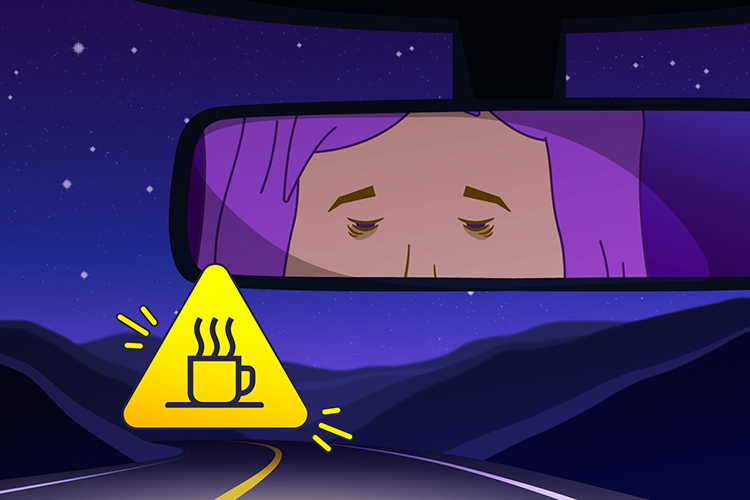How this technology works
Driver monitoring systems monitor driving performance and alert you if it detects that you are not engaged in the task of driving, for example if you show a lack of attention or drowsiness.
Some systems use cameras to monitor the car's position on the road compared to the road markings. When the system detects a large range in your lane keeping performance, the system lights a visual display on the dashboard (usually a coffee cup symbol and a short message that encourages you to take a break) and sounds a warning signal.
Other systems monitor things like your steering, speed, acceleration, use of turn signals, and pedals to determine your driving patterns during the first few minutes of every trip. If it detects a change in driver operating behaviour, you'll be alerted with audio and visual indicators.
Description
A tired driver is alerted by a visual icon showing a coffee cup.
Some systems feature a camera that monitors the driver's attention using driver vision, or head position. If the system finds that your attention is away from the road for too long or your eyes are closed for longer than a blink, it will sound audio and visual warnings.
A haptic alert (seat vibration or brake pulse) is also used if you don't respond to the audio and visual alerts. In some vehicles, information from the driver monitoring system can be used to help assess whether the driver is available to take over driving.
Some manufacturers are combining driver monitoring systems with other driver assistance technologies that automate steering, braking, and acceleration, such as adaptive cruise control, and lane centering assistance.
Operation
There are different variants of this system:
- Systems vary by manufacturer. Some systems only work above certain speeds or when a driver assistance system, like adaptive cruise control, is activated.
- Some systems warn the driver by initiating braking pulses
- Some systems automatically activate safety measures such as reversible seat belt pretensioners and hazard lights
Things for drivers to keep in mind
- Don't use this system as an alarm clock. Do not drive when drowsy. Take a break
- Driver monitoring systems are designed to help avoid collisions
- They don't replace your attention and judgment
- You should read your owner's manual to learn about your vehicle's system, including its features and limits
